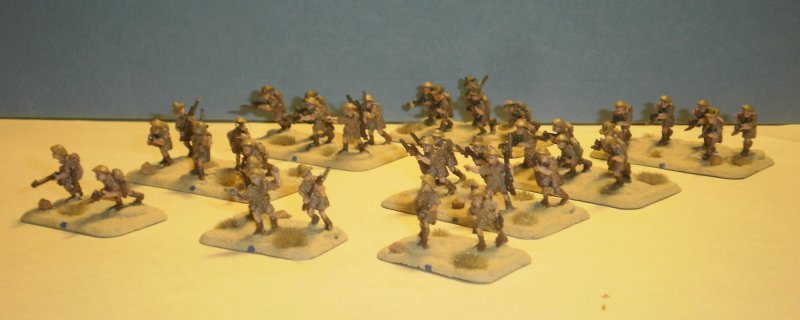
Australian Rifle Platoon (BR747)
Mid-War and Early War (North Africa)
This collection has been used to field a mid-war Australian 9th Division Rifle Company (British Rifle Company rules on p142 in the North Africa book), mid-war Australian Division Cavalry Squadron (Divisional Cavalry Squadron rules on p148 in the North Africa book) and an early war Australian Rifle Company (Commonwealth Rifle Company rules in Hellfire and Back book).
Combat Platoons

Australian Rifle Platoon (BR747)
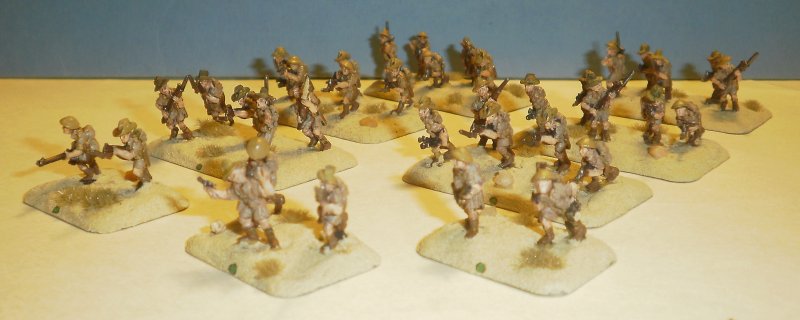
Australian Rifle Platoon (BR747)
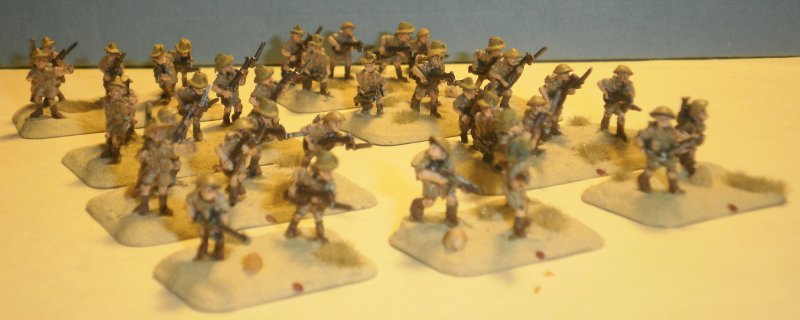
Australian Rifle Platoon (BR747)
Weapons Platoons
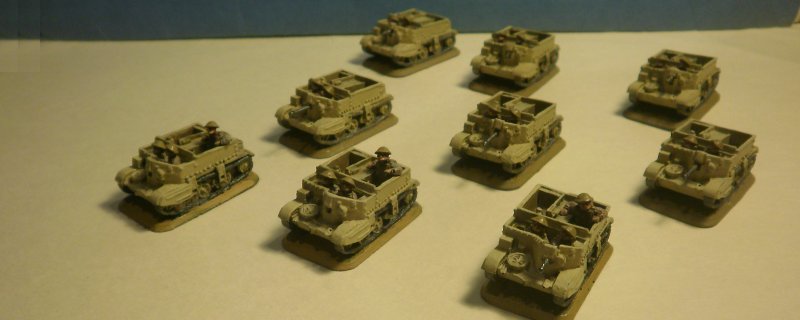
Universal Carriers (3 x BR210)
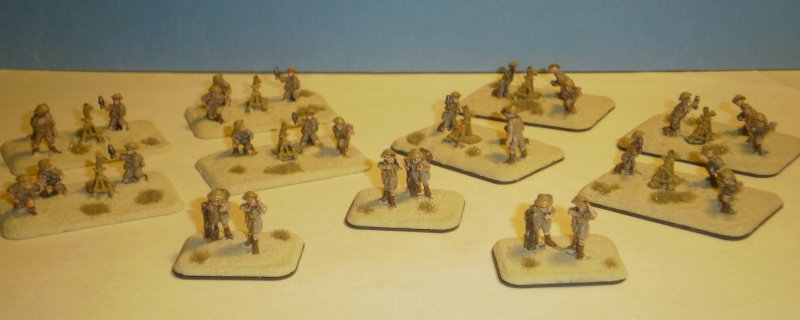
Mortar Platoon comes with six 3" mortars (BR745). However I have two extra 3" mortars
from the Company HQ blister.
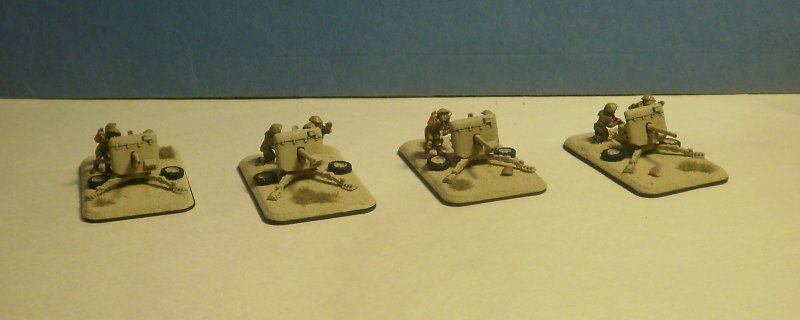
2 pdrs: 2 x BR500.
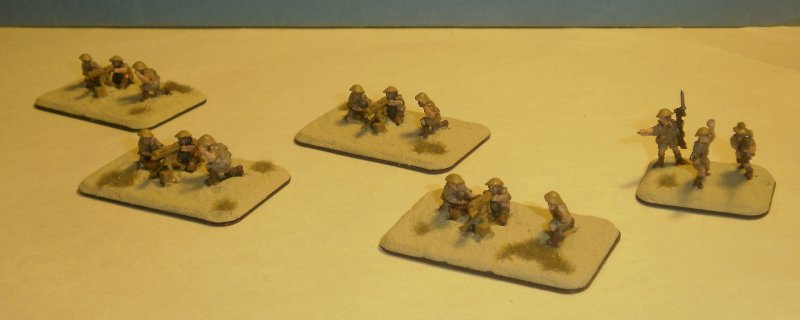
Vickers HMG (BR744)
Divisional Support
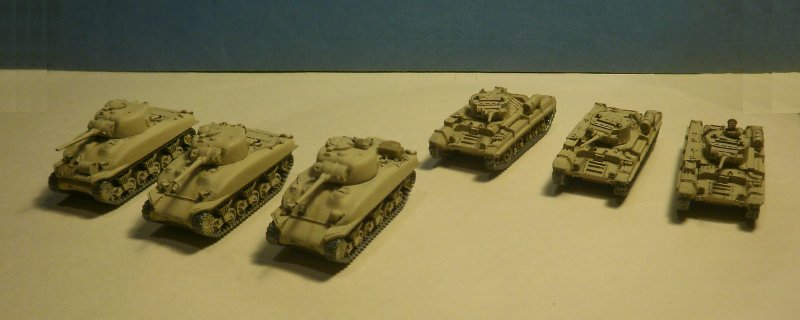
The three Shermans are the resin models from the v2 Open Fire set. They can't be used with an Australian Rifle Company, but can be
a support option for the Australian Divisional Cavalry Squadron. The Valentines
(3 x BR060) can be used with both the Rifle Company and the Divisional Cavalry.

6 pdrs. The guns can be mounted on the trucks as portees (4 x BR155).
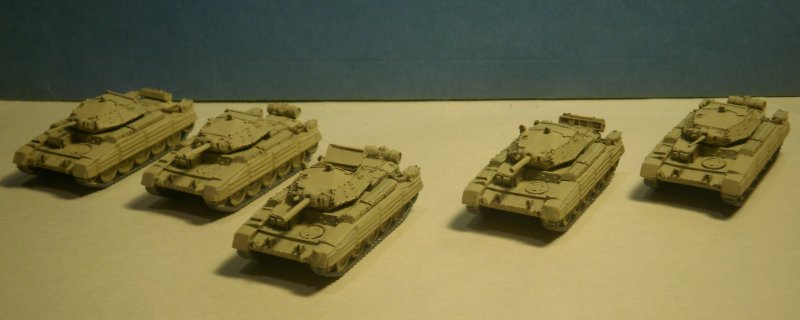
Crusaders (5 x BR032). An Australian Rifle Company can include a unit of 3 Crusaders.
The Divisional Cavalry Squadron requires at least 5 Crusaders.
The models should all have the thinner 2 pdr barrel, but I used the thicker
barrels on three models because the thinner guns are too fragile.
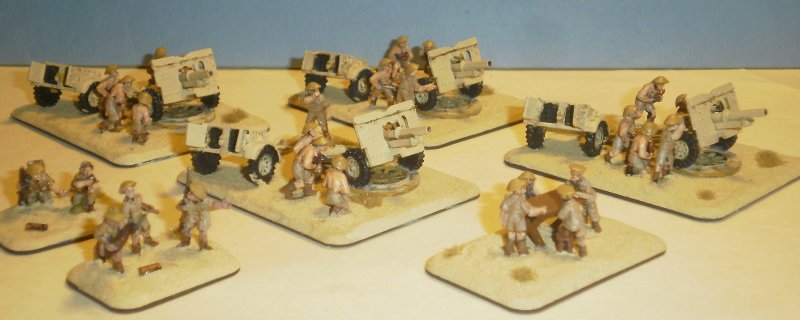
25 pdr Field Battery (2 x BR574).
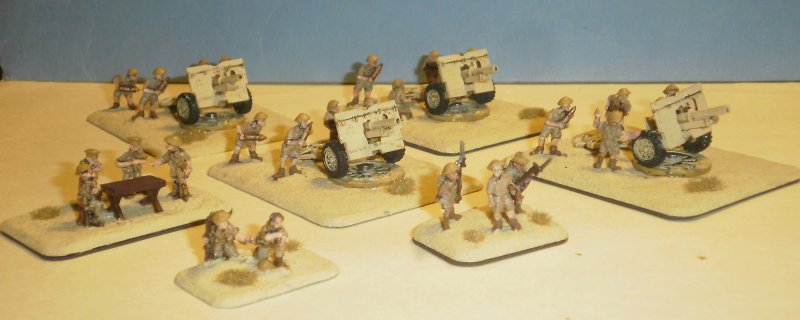
25 pdr Field Battery. The models are from the Horse Artillery box set, and
the 25 pdrs can be removed and replaced with 18 pdrs.
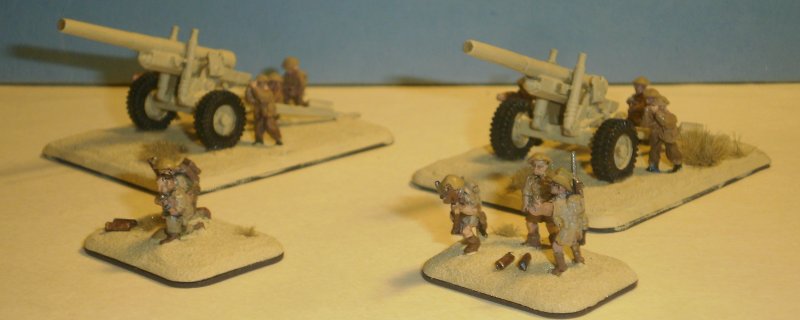
Medium Battery 5.5" guns. The guns and crews are from QRF Models.
Command team and observer are Battlefront models.
Painting the Australians
I came to Flames of War after collecting Games Workshop models for seven years and as such had a large number (50+) of GW paints. The outdated Afrika book has a Painting British Forces colour guide that gives details for both Vallejo and Games Workshop paints. I started using the details for the GW paints. I only realised some time later that there was a noticeable difference between the recommended GW and Vallejo colours.
The infantry were primed with GW black spray paint, and then base coated with GW foundation paints. This was Iyanden Darksun for the uniforms and Tallern Flesh for the arms, legs and faces. The infantry were given Kommando Khaki uniforms, Graveyard Earth socks and Desert Yellow helmets, mortars and Vickers MGs. They were given a wash of GW Gryphonne Sepia.
The bases were covered with Tamiya Desert Yellow textured paint. This takes a couple of days to completely dry, but gives a lovely fine grained sandy finish. The paint settles as it dries, and smooths out any irregularities in the basing. Its easy to work with, and is water based. The final touch was to add small stones from my wife's bonsai materials and grass from the local hobby store.
The artillery and anti-tank guns were primed with GW black spray paint, base coated with Darksun and then painted Desert Yellow.
My models weren't looking the same as the pictures in the North Africa book. I purchased Vallejo Dark Sand, which is noticeably lighter than GW Dessert Yellow, and repainted the guns and vehicles. I decided against repainting the infantry and gun crews though. As I added tanks to the collection I moved from priming with GW black spray to Army Painter Desert Yellow primer.
When version 4 of Flames of War was released the Australian Rifle Company wasn't a valid list. The models could be used for a motor company, but what was previously a large force now wouldn't even make a normal size (ie 100pts) army. Fortunately I was able to pick up lots of second hand Grants and Crusaders.
.jpg)
.jpg)
.jpg)
This collection has been used to field a mid-war Panzkerkompanie (p24 in North Africa book) and Afrika Schutzenkompanie (p26 in the North Africa book). It has also been used to field an early war Schutzenkompanie (p64 in Hellfire and Back book)
Combat Platoons
I purchased two blisters of DAK PanzerGrenadiers (GE743) and put all the models with caps in one platoon while the other platoon has all helmets. Note that Anti Tank Rifle Teams were part of the Company HQ Africa (GE741). I have also purchased (but not yet painted) the Light Mortar (GSO102) teams required for the Early-War variant of the list. At the time I started collecting this force, the GE742 Schutzen Platoon was not available.
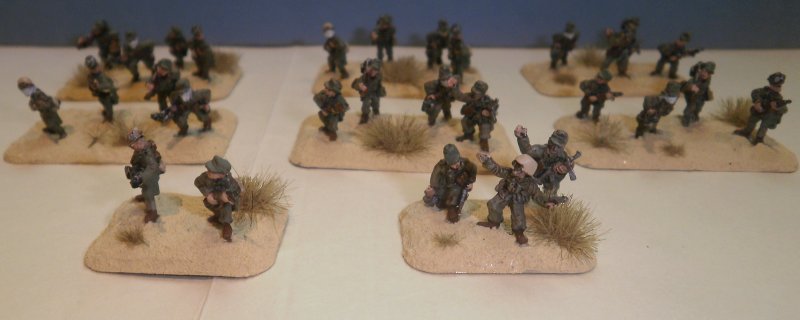
Afrika Schutzen Platoon (GE743)
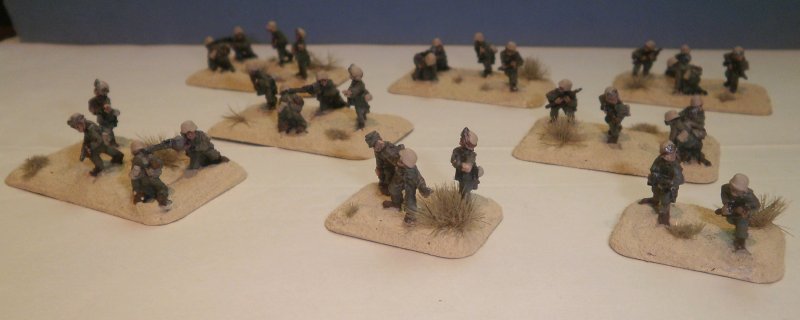
Afrika Schutzen Platoon (GE743)
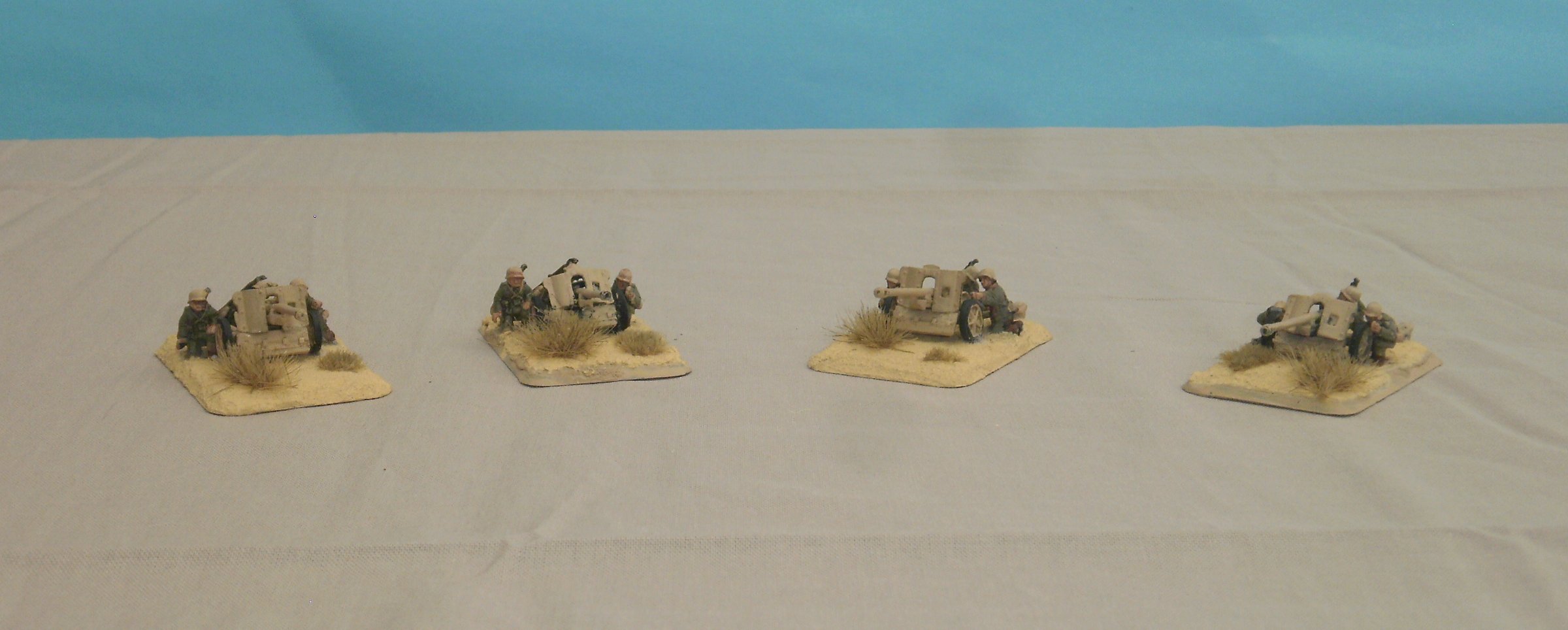
Company HQ Africa (GE741) and 5cm PaK38 (GE510). Up to two PaK38 guns
can be added to each mid-war Schutzen Platoon.

HMG models are GE744. 8cm Mortars are GE745.
Support
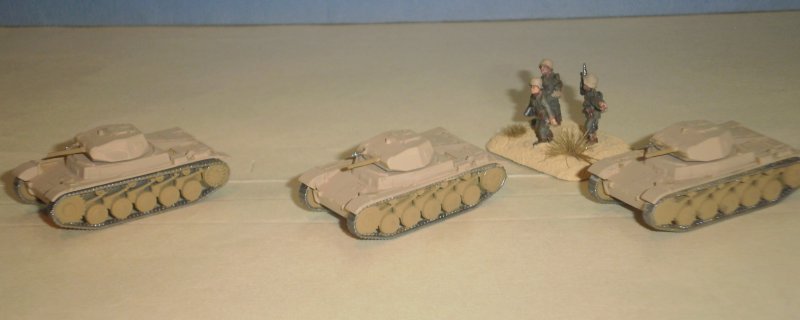
Panzer II (Zvelda models). A support choice for either an Early War
Schutzenkompanie or a Mid-war Panzerkompanie.
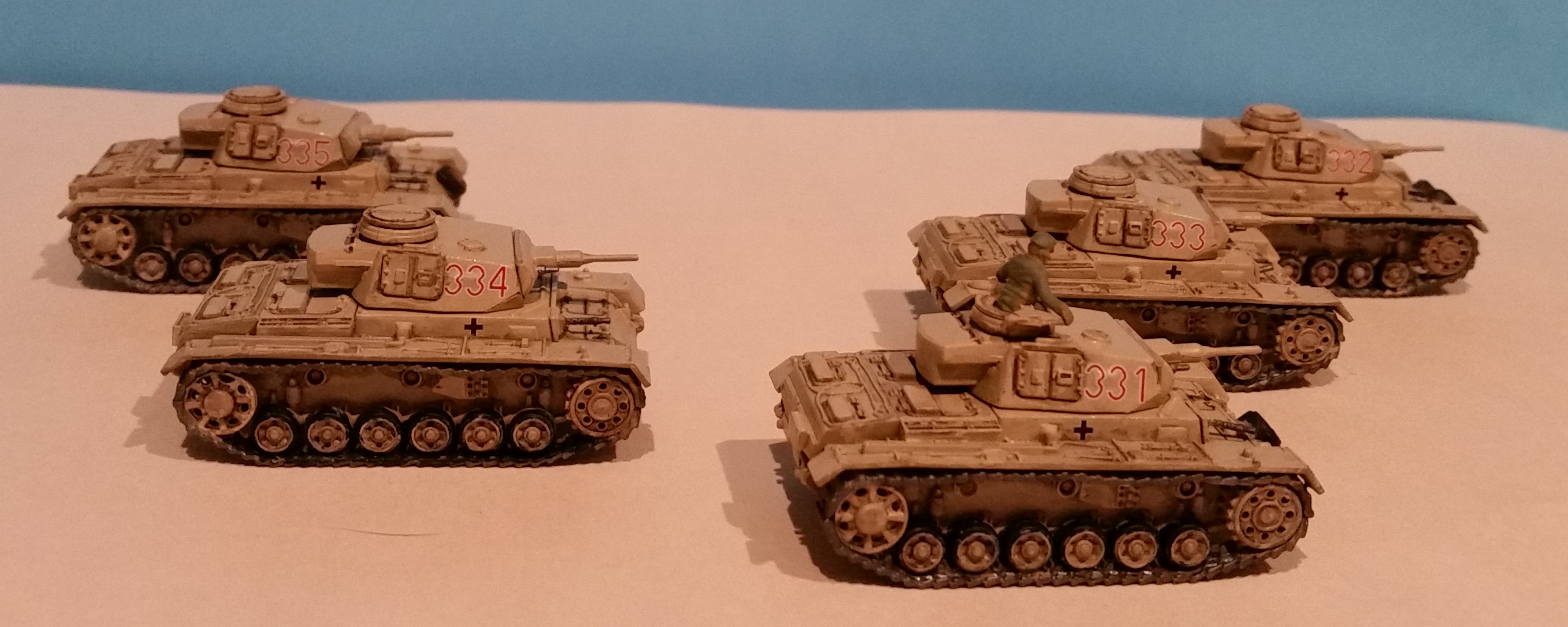
Panzer III G (Plastic Soldier Company)
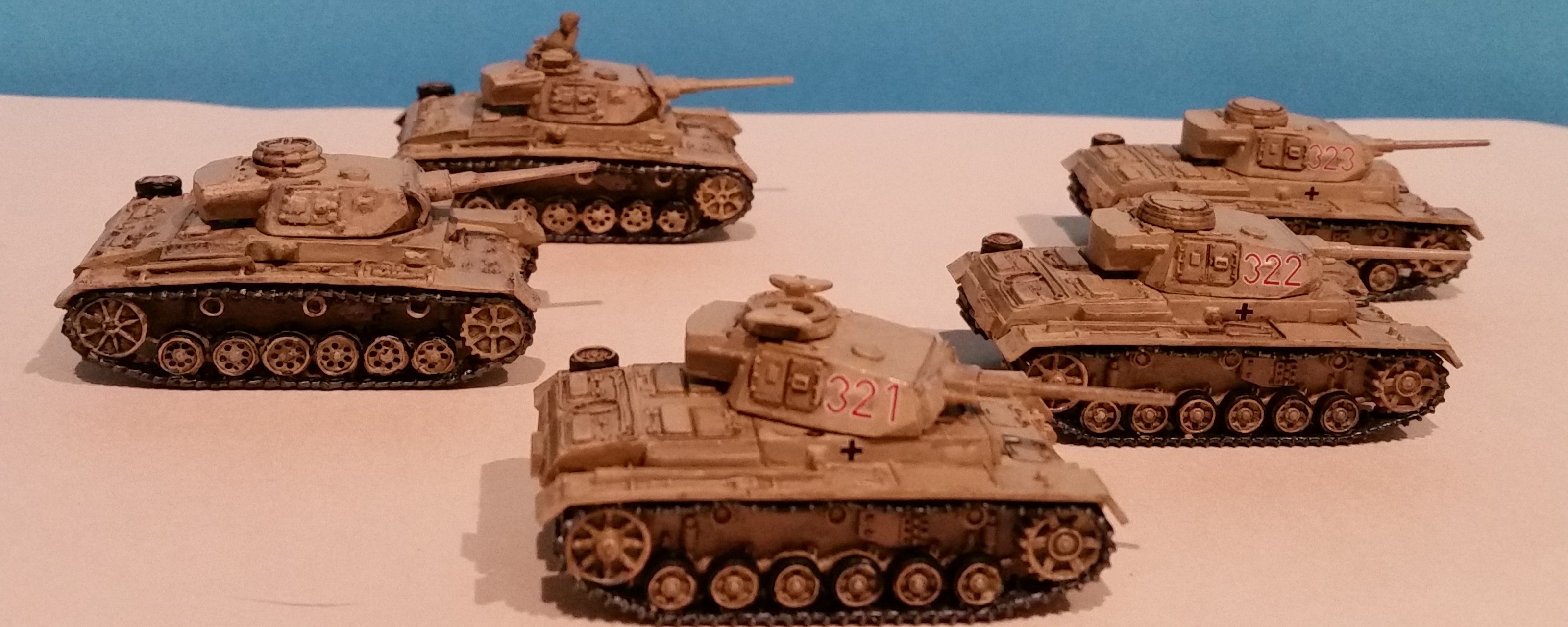
Panzer III J long 5cm (2 x GE033 and 3 x Plastic Soldier Company)
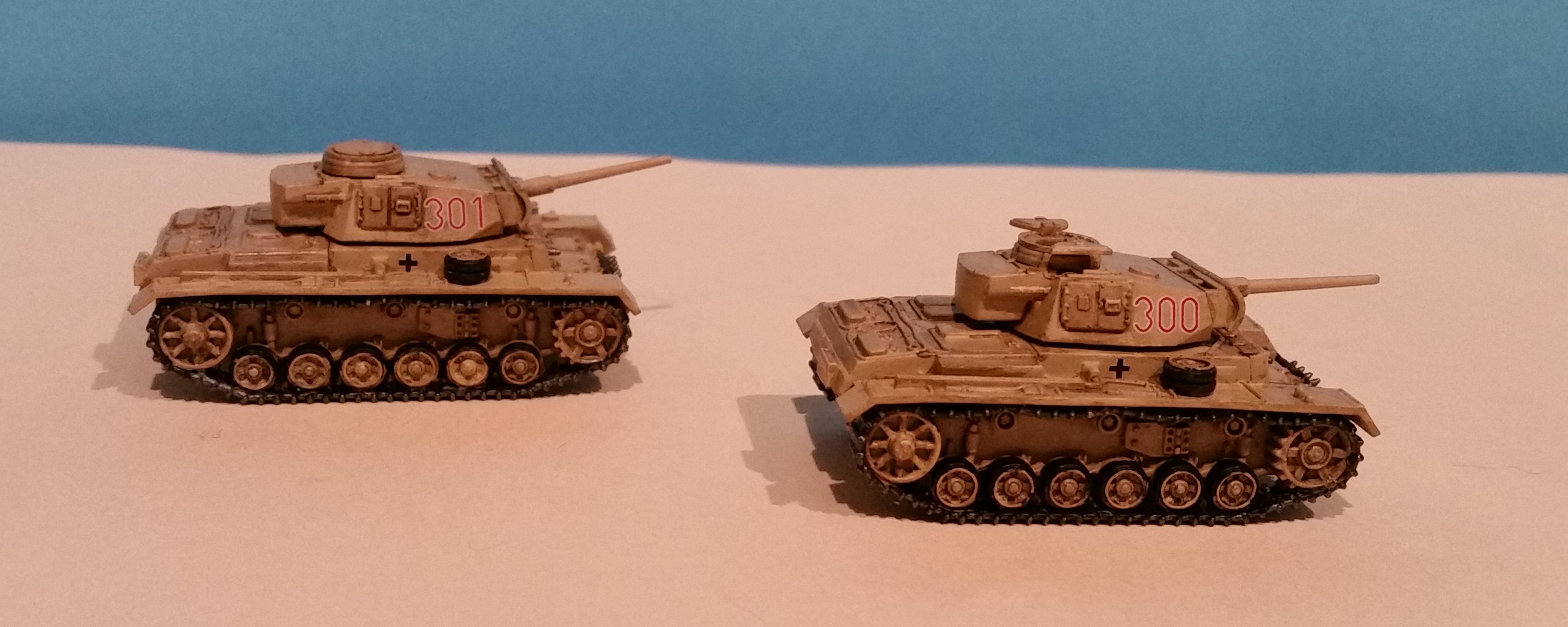
Panzer III L (Plastic Soldier Company)
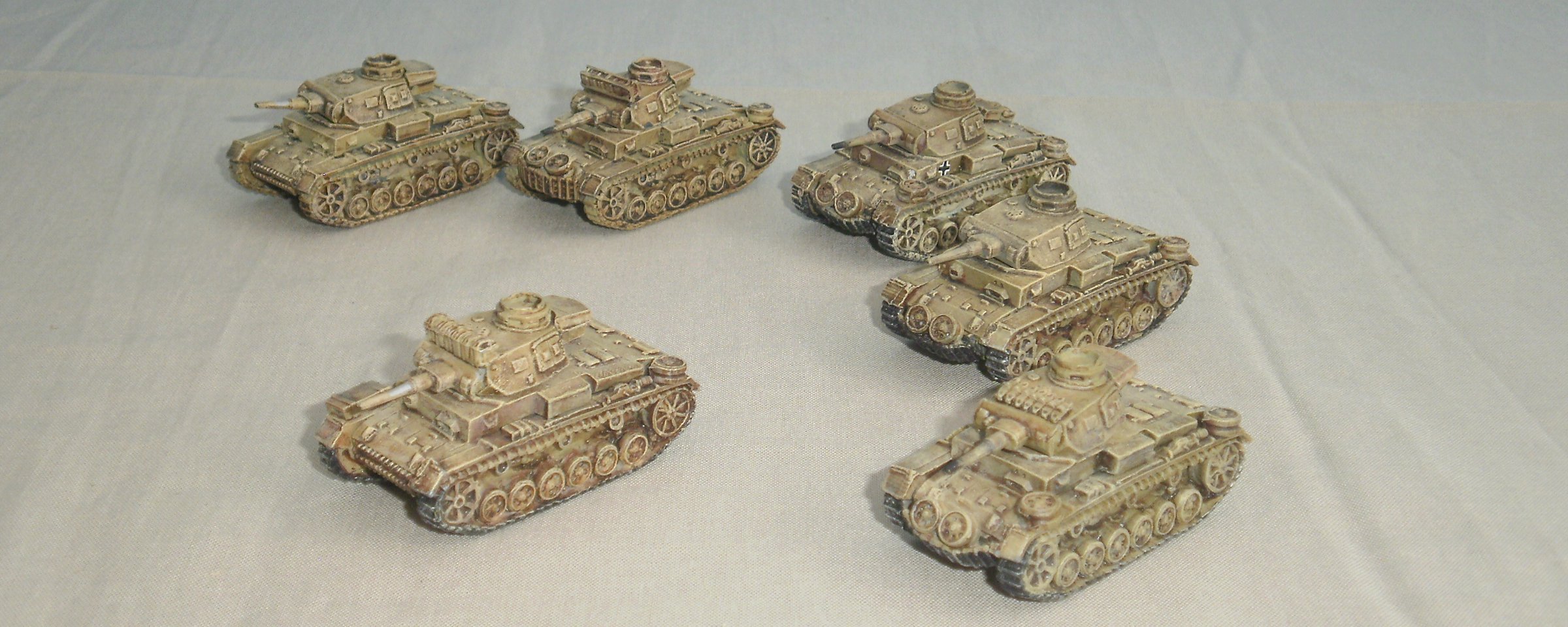
Panzer IIIJ short 5cm (6 x GE033)
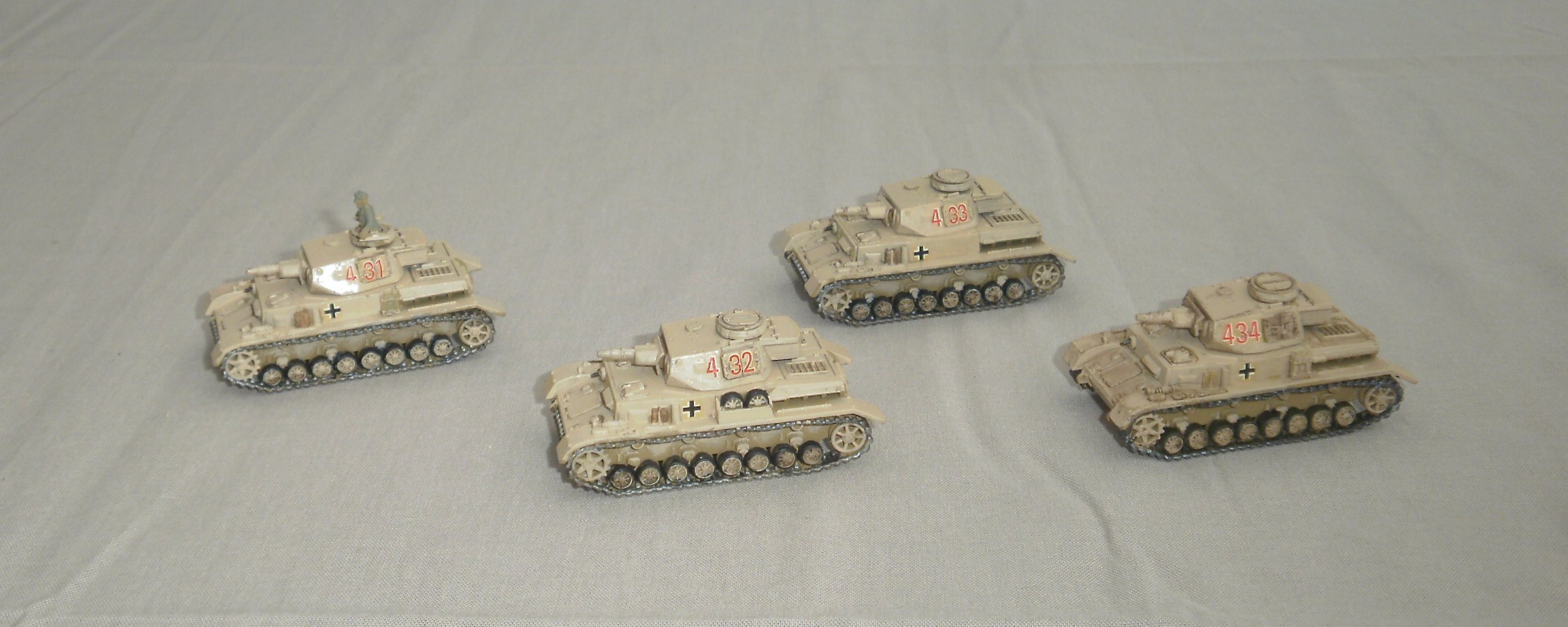
4 x Panzer IV F1 tanks. (Plastic Soldier Company)

6 x Panzer IV F2 tanks. (Plastic Soldier Company)
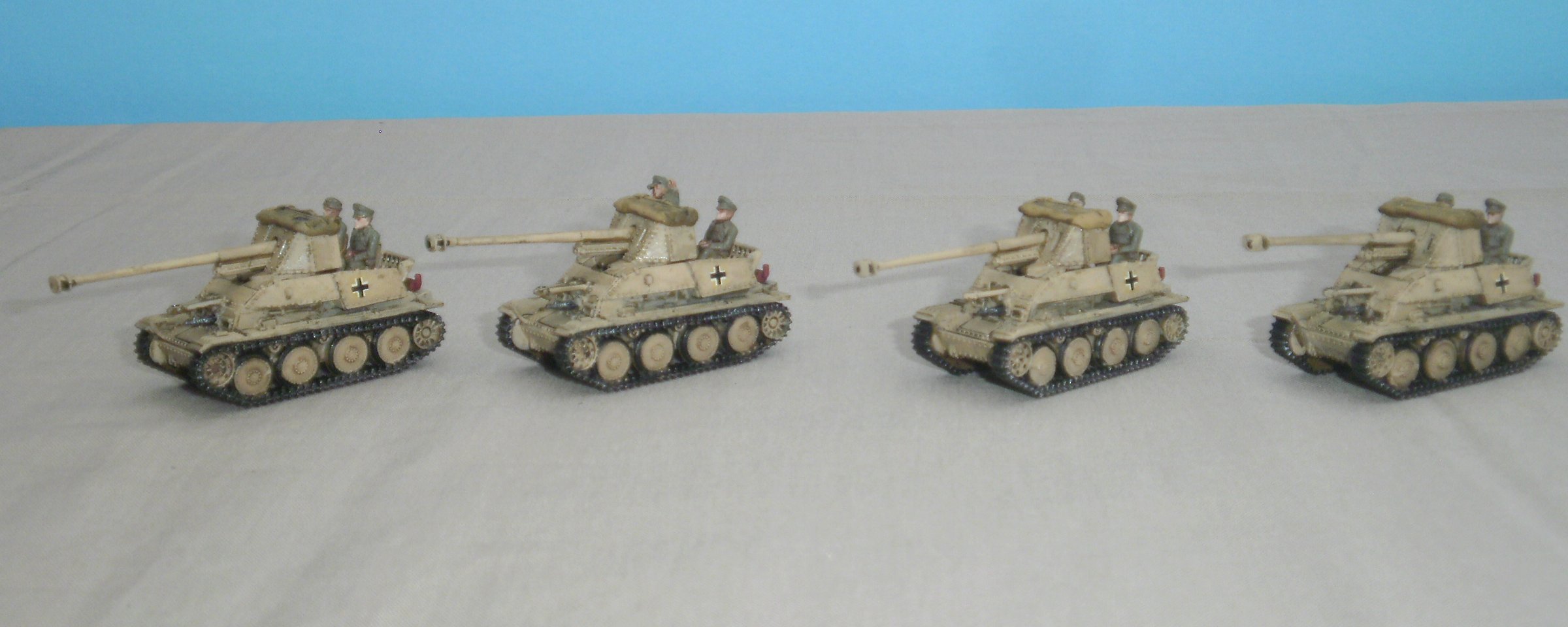
Marders (Plastic Soldier Company)
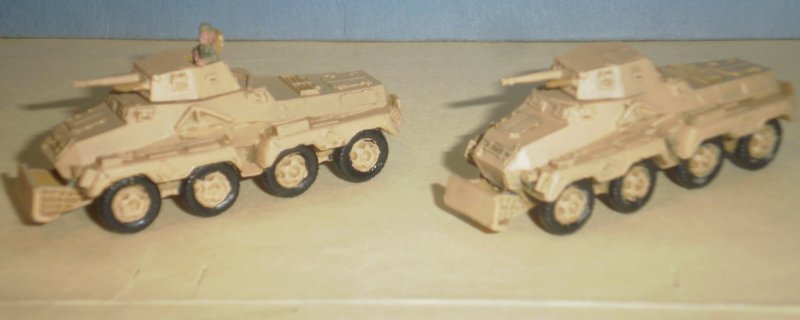
2 x Sd Kfz 231 (8-Rad). (GE340).
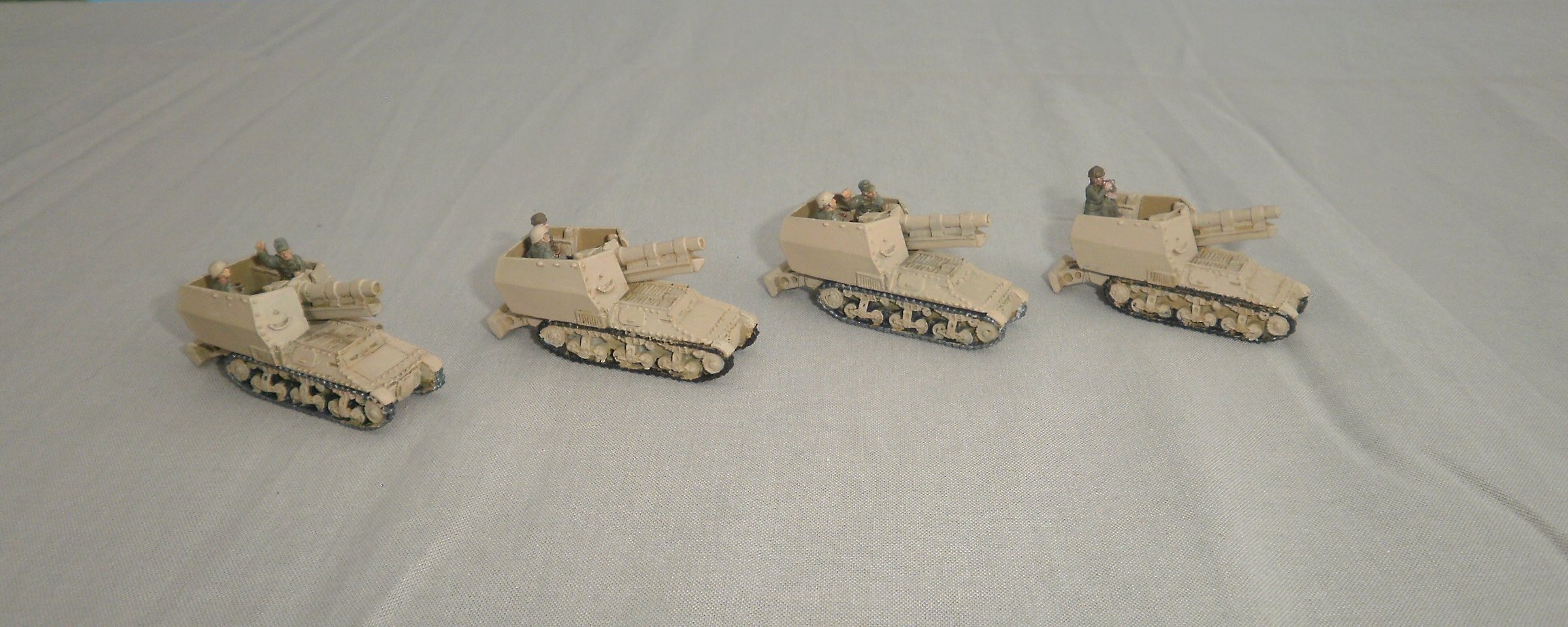
4 x 15cm (Sf) Lorraine Schlepper (GE149)
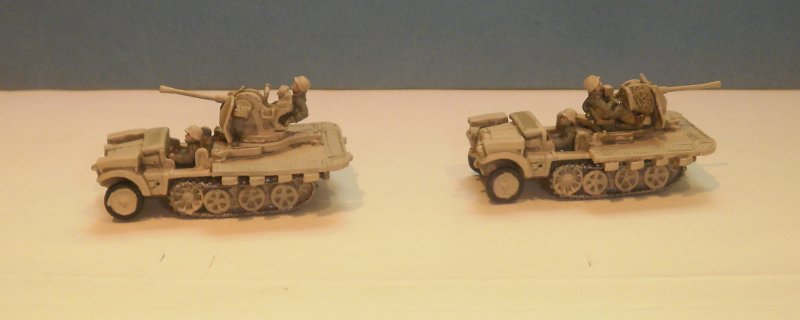
2 x Sd Kfz 10/5 (2cm) AA (GE160)
Painting the DAK forces
Once again, I used the Afrika book which has a Painting Afrikakorps guide. Initially I was undercoating the infantry models with the GW Chaos Black primer, but with later purchases I switched to using Army Painter Desert Yellow. All the vehicles were base coated with Army Painter Desert Yellow primer.